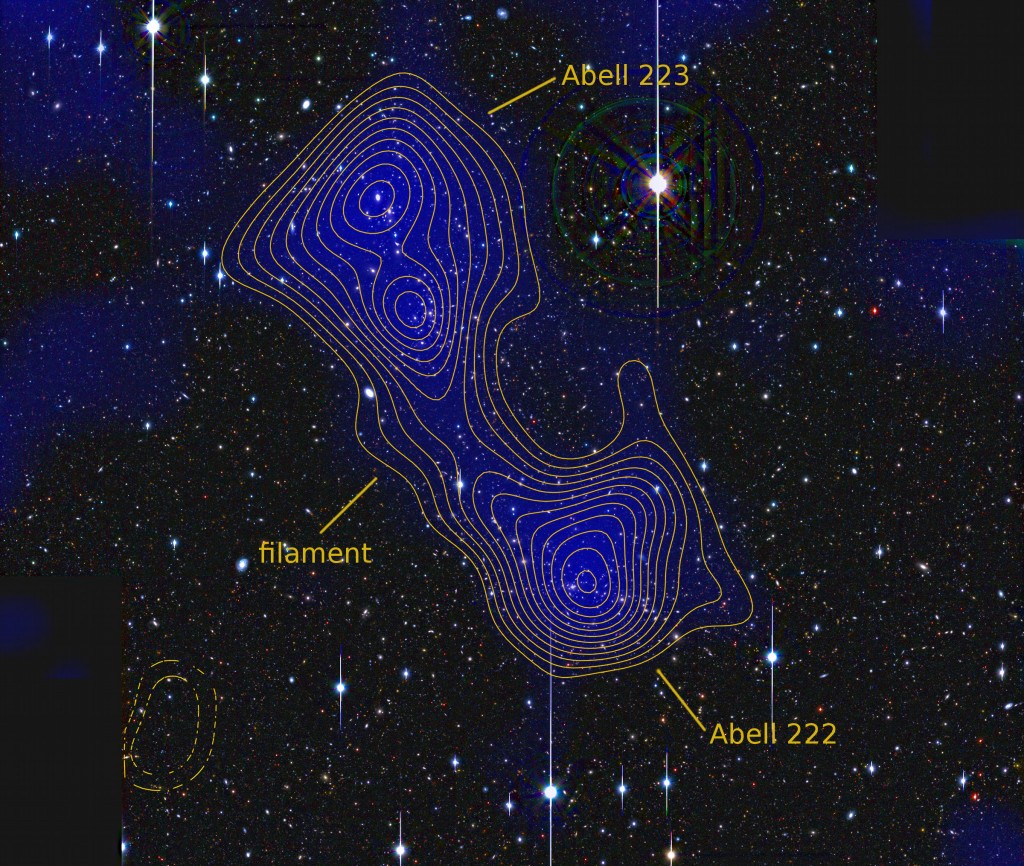
As time passes and more research is done, more evidence is compiled supporting the theory that suggests that dark matter is a real thing, even though no direct evidence for its existence has ever been found. Instead, the evidence comes about as measurements of other phenomenon are taken, generally involving gravitational pull on objects in the universe we can see that cannot be explained by other means. One of these instances is where weak gravitational lensing occurs, which is where light appears to bend as it passes by large objects. Theory suggests that in cases where lensing occurs but there is no detectable object behind its cause, the reason for it is dark matter exerting a gravitational influence. That has been the case with what are known as filaments; gravitational effects that connect galactic superclusters, keeping them bound together. Now Jörg Dietrich and colleagues have added credence to the theory by finding a measurable example of lensing in one specific supercluster that cannot be attributable to a visible object. They outline their findings in their paper published in the journal Nature.
Source/Continue reading → phys.org
Quel ponte di materia oscura
Individuato grazie alle riprese del telescopio Subaru un gigantesco filamento di materia, in gran parte composto da materia oscura. Il risultato, pubblicato in un articolo nell’ultimo numero della rivista Nature, è stato ottenuto sfruttando il fenomeno della lente gravitazionale previsto dalla Teoria della Relatività Generale. ’è un enorme filamento di materia che unisce, come un invisibile ponte, i due ammassi di galassie denominati Abell 222 e Abell 223. Invisibile perché la stragrande maggioranza della sua massa non è composta da materia ordinaria (barionica), ma bensì dalla elusiva materia oscura. A scoprirlo è stato un team di ricercatori guidato da Jörg Dietrich della University of Michigan, il cui lavoro viene pubblicato nell’ultimo numero della rivista Nature.
Fonte/Leggi tutto → www.media.inaf.it





















